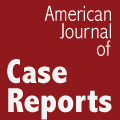Get your full text copy in PDF
Stanisław Ulatowski, Łukasz Pawlak, Katarzyna Romańczuk, Wojciech Split
Med Sci Tech 2008; 49(4): RA241-245
ID: 881629
Introduction: The psychosocial stress is considered to be the most predictable cause of tension-type headache (T-TH). The subpopulation of adolescents is vulnerable to stress. The aim of the study was to evaluate the prevalence of T-TH among adolescents and to assess the degree of perceived stress. Material and methods: The methods of the study were based on the personal questionnaire and the clinical verification. T-TH was diagnosed in accordance with the International Headache Society (IHS) criteria. The influence of stress was evaluated using the PSS-10 Cohen’s scale of stress. The study included 2373 adolescents (942 boys, 1431 girls) aged 13-19 years, randomly chosen from secondary schools. Results: T-TH was diagnosed in 817 students (34.4%), including 225 boys (23.9%) and 592 girls (41.4%). The prevalence of T-TH was increasing with age. Infrequent episodic T-TH (IT-TH) was observed in 4.5% of students, frequent episodic T-TH (FT-TH) in 28.7% and chronic T-TH (CT-TH) in 1.3% of the study group. The average perceived stress index among the group with T-TH was 28.5% and 16.9% among students without headaches, depending on age and gender. A higher value of the perceived stress index was found among girls with T-TH – 29.4%, as compared to 26.2 % among boys. The average perceived stress index was 21.1% in the IT-TH group, 29.4% in FT-TH group, and 40.4% in CT-TH group. Conclusions: T-TH prevalence among school adolescents correlates with gender, age and sensitivity to psychosocial stress. There is also a correlation between stress sensitivity and the type of T-TH (frequency of pain episodes). (Clin Exp Med Lett 2008; 49(4): 241-245)
Keywords: Tension-Type Headache, psychosocial stress, school adolescents



